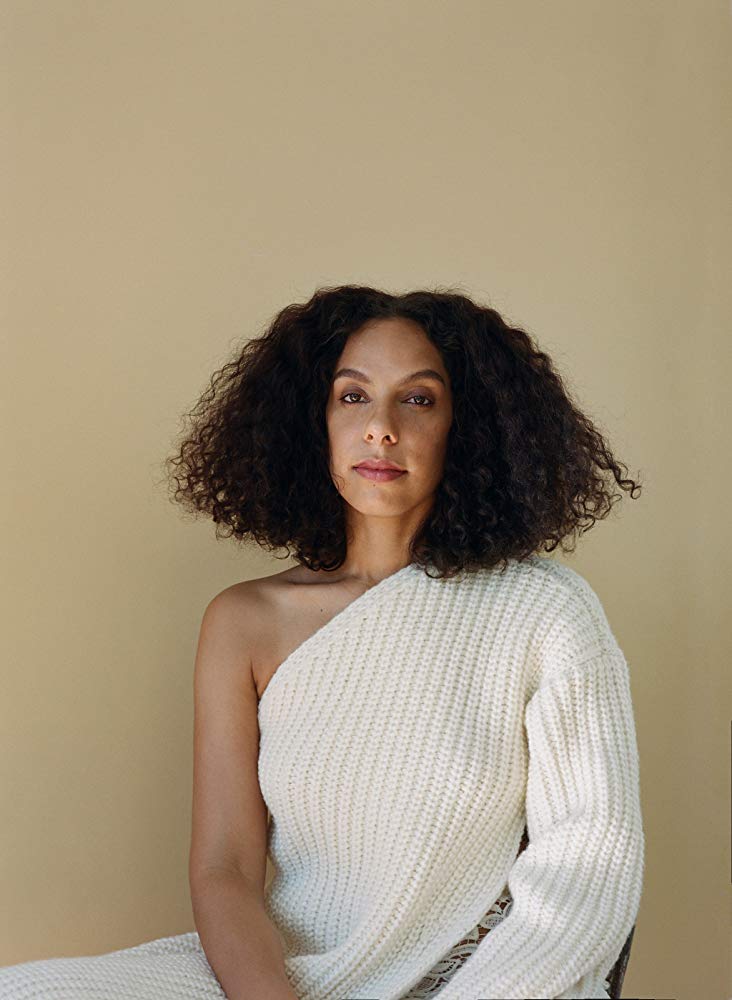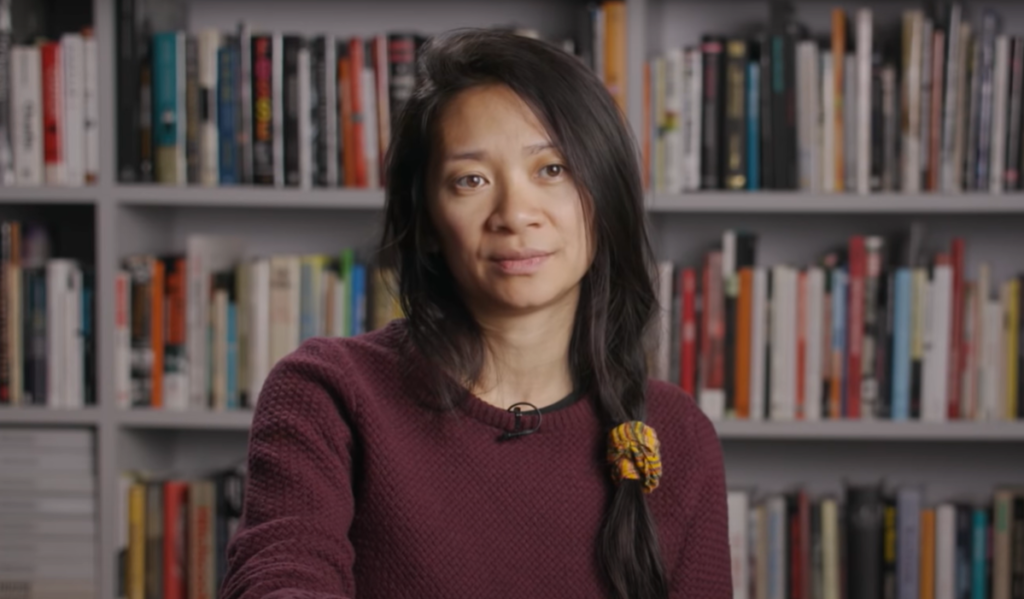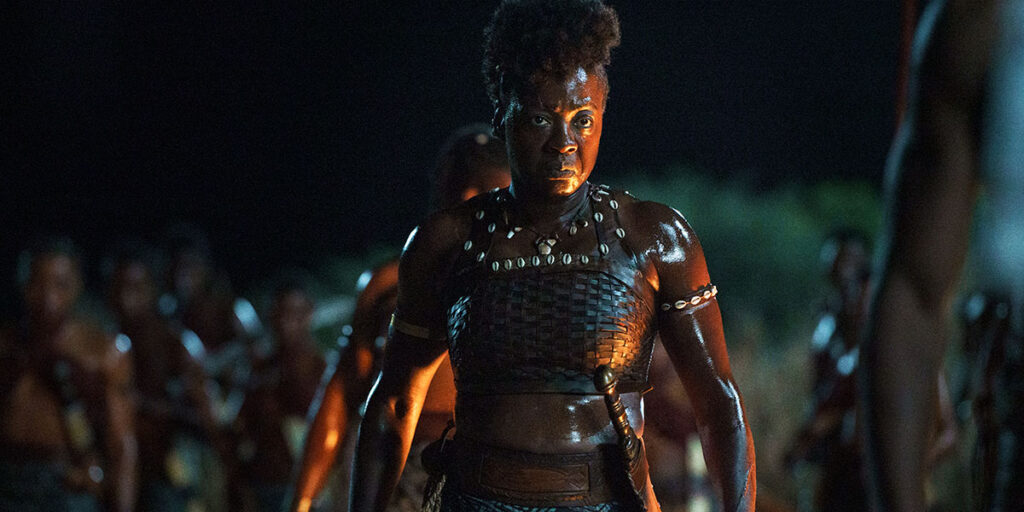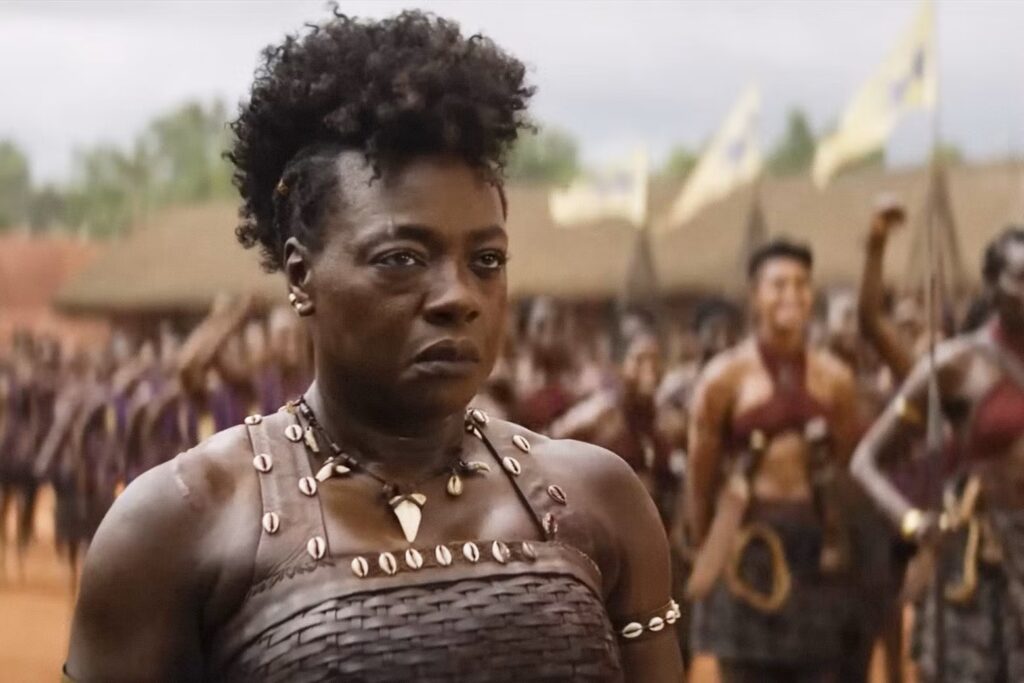We’re ushering in 2020 with some good news and some bad news. Dr. Stacy L. Smith and the Annenberg Inclusion Initiative just dropped their latest report, “Inclusion in the Director’s Chair,” a study examining the prevalence of female directors working across 1,300 top-grossing films from 2007 to 2019. While women directors of the top-grossing films marked a 13-year high in 2019, women of color remain severely underrepresented in the director’s chair.
The top 100 films of 2019 were helmed by a total of 113 directors, 89.4 percent of whom were male and 10.6 percent of whom were female, amounting to a gender ratio of 8.4 males to every 1 female. While those numbers leave something to be desired, it’s important to acknowledge that 2019 had a “significantly higher percentage (10.6 percent, 12 female directors) and number of female directors than 2018 (4.5 percent, five female directors) or 2007 (2.7 percent, three female directors).” Indeed, the 2019 numbers mark the highest percentage of female directors in the top films in 13 years.
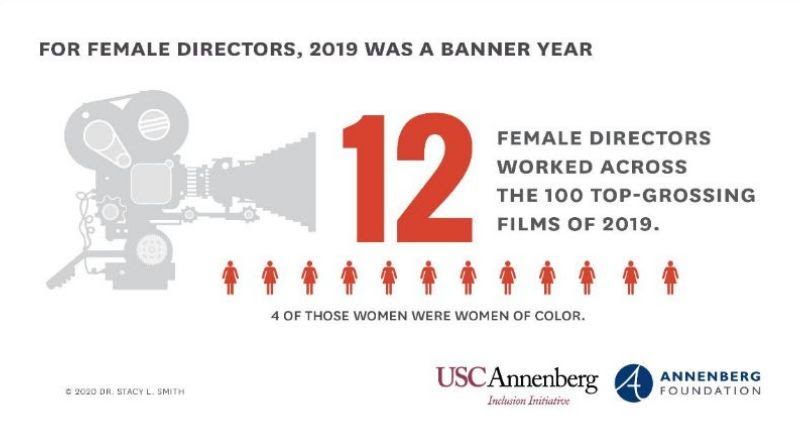
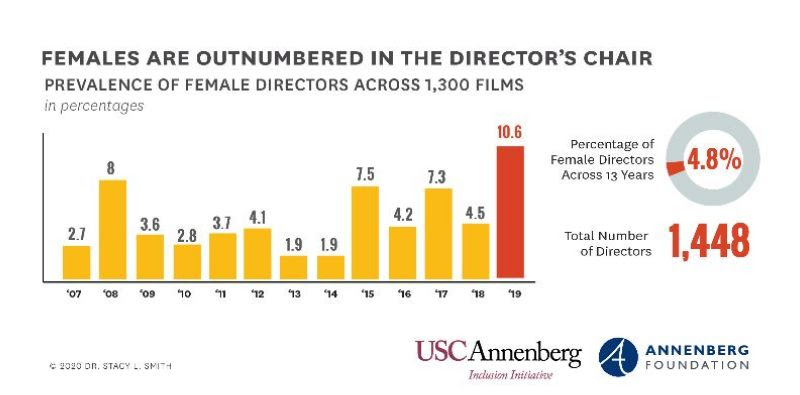
Still, the study paints a bleak picture in some respects. “Women of color held less than one percent of all directing jobs across 1,300 top films, whereas white males held 82.5 percent of jobs, underrepresented males 12.6 percent of jobs, and white females 3.9 percent of jobs,” the report details. The ratio of white male directors to underrepresented female directors was a whopping 92 to 1, though “this group of women represents 20 percent of the U.S. population.” The films helmed by women of color received a higher average Metacritic score than those directed by white males, white females, or underrepresented males, leading Smith and Co. to conclude that there’s a “major disconnect between hiring practices in Hollywood and who has the cinematic heft to carry stories.”
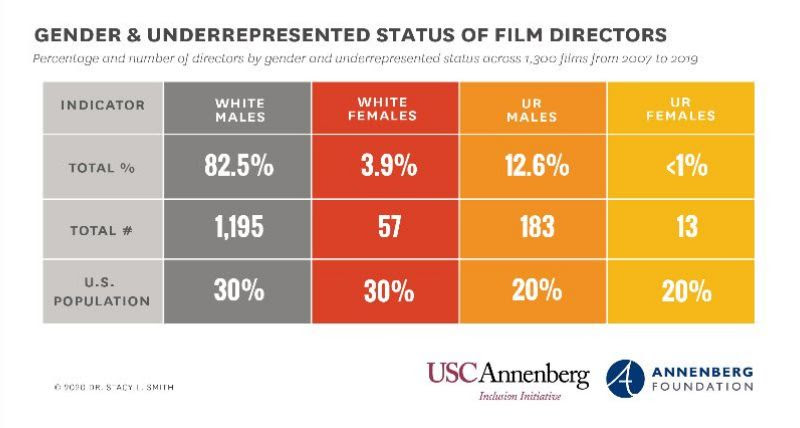
“Inclusion in the Directors Chair” focuses on distributors as well, and found that, of the major studios, Universal Pictures had the most female directors attached to the films they distributed, followed by Warner Bros. and Sony Pictures Entertainment. Paramount Pictures had the worst worst track record for distributing films helmed by female directors.
The report looks beyond the top 100 titles to examine film slates distributed by major companies over the last five years, and the results “revealed that the overall percentage of female directors was 9.8 percent, with 2019 the year in which the highest percentage of female directors worked (15 percent).” Of 40 slates studied, 26 did not feature a single woman of color as a director.
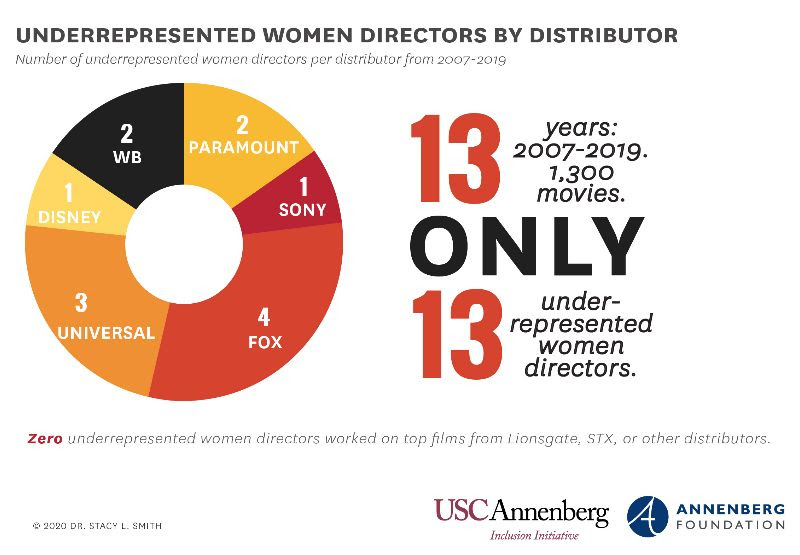
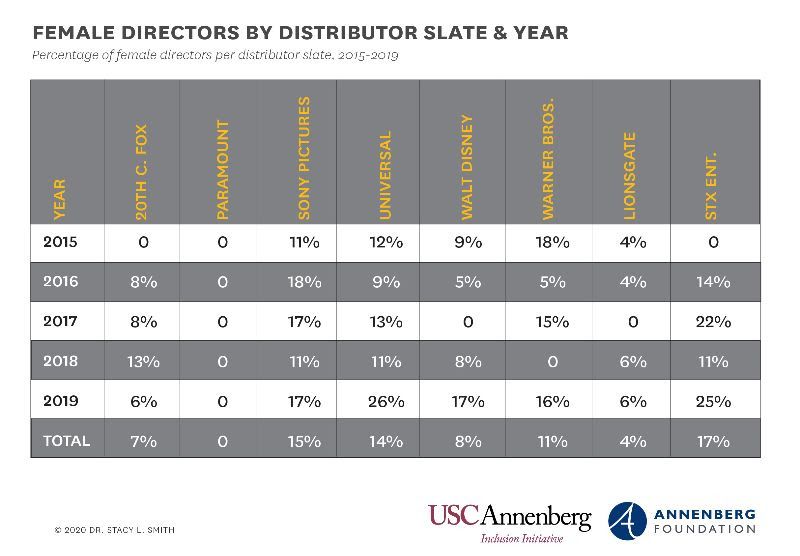
“Inclusion in the Director’s Chair” also assesses the gender of director nominations across 13 years and four awards shows: Golden Globe Awards, Directors Guild of America (DGA) Awards, Academy Awards/Oscars, and Critics’ Choice Awards. “Overall, a total of 273 nominations were given out across the four top award shows with 94.9 percent allocated to male directors and 5.1 percent allocated to female directors,” the study reveals. “All 14 of these nominations were accounted for by four women (Angelina Jolie, Ava DuVernay, Kathryn Bigelow, Greta Gerwig). Only one director was a woman of color (Ava DuVernay).” In other words, very few women directors have been on the receiving end of awards love, and it’s the same women who tend to get any attention at all.
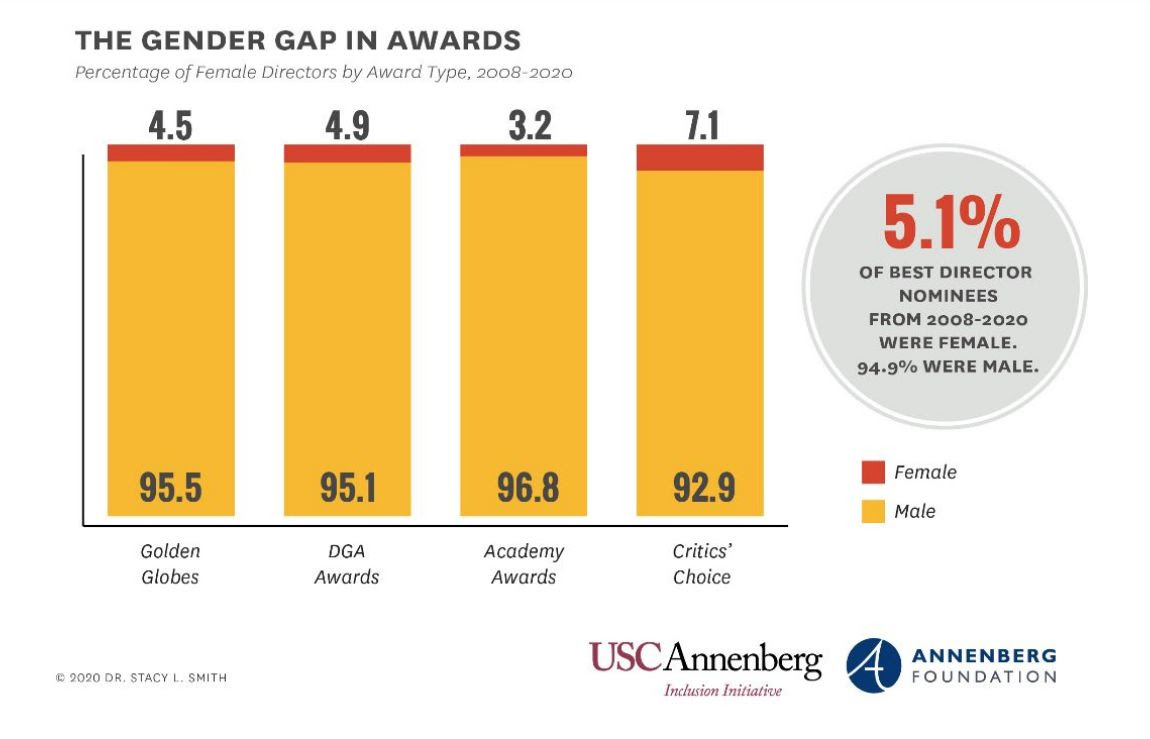
“A bias that fails to acknowledge women’s leadership is pervasive throughout the entire awards ecosystem,” said Smith. “Whether it is the Golden Globes, the Academy Awards, the DGA Awards, or the Critics’ Choice Awards, we see that women’s achievements behind the camera are still not seen or celebrated by their peers or the press. Until we shatter the stereotype of who can be lauded as a director, we will not see change in this area.”
Gerwig’s “Little Women” is in theaters now. Her take on Louisa May Alcott’s beloved story about the March sisters has already grossed over $43 million worldwide since opening on December 25. Gerwig was notably absent from this year’s Golden Globe nominations, as was DuVernay’s Emmy-winning limited series “When They See Us.”
As of January 2, 2020, according to Box Office Mojo, the top-grossing domestic women-directed and co-directed films of 2019 were:
4. “Frozen II” – Directed by Jennifer Lee and Chris Buck ($430,098,939)
5. “Captain Marvel” – Directed by Anna Boden and Ryan Fleck ($426,829,839)
29. “Hustlers” – Directed by Lorene Scafaria ($104,954,881)
46. “Abominable” – Directed by Jill Culton and Todd Wilderman ($60,663,760)
49. “A Beautiful Day in the Neighborhood” – Directed by Marielle Heller ($56,721,042)
64. “Harriet” – Directed by Kasi Lemmons ($42,514,795)
67. “Queen & Slim” – Directed by Melina Matsoukas ($40,718,120)
68. “Breakthrough” – Directed by Roxann Dawson ($40,713,082)
69. “Little” – Directed by Tina Gordon ($40,673,960)
72. “Little Women” – Directed by Greta Gerwig ($37,605,000)
95. “On the Basis of Sex” – Directed by Mimi Leder ($22,946,065)
96. “Booksmart” – Directed by Olivia Wilde ($22,680,962)
97. “A Dog’s Journey” – Directed by Gail Mancuso ($22,546,590)
